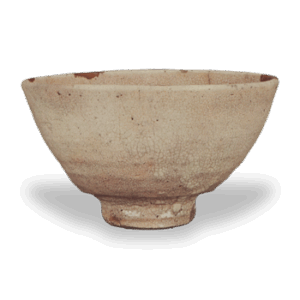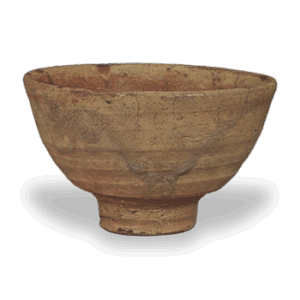
Height 8.8 cm, mouth diameter 11.2-12.4 cm, base diameter 4.7 cm
The two characters “Shigure” in gold-painted letters on the cover of the inner box are said to have been written by His Holiness Ryosho, a priest of Manjuin Temple in Kyoto, and the inscription is thought to be related to the scenery of the black tea bowl with a thin glaze. On the front of the lid of the outer box, there is a inscription, “This teacup is in the Mitsui family collection, but in the Tenpo era, both this teacup and the nail engraved Irabo autumnal mountain were to be given to the Hirase family, but this time the bidding (Hirase family in 1903) was successful to Rogyinko Toda, and I begged a lot with an inappropriate amount of money and it became the Saigyoan’s treasure. The former owner, a tea master in Owari, Shimomura Saigyoan, wrote the following about its origin: “It became the treasure of Saigyoan, and was sold to Toda Roginko (Hirase family) in the 6th year of Hirase’s reign. It was further handed down from Saigyoan to Morikawa Nyoshunan.
It has a low base that at first glance looks like the bottom of a goze, and from the edge of the base, it slowly rises to the waist while maintaining a rich roundness, and from the waist to the mouth, it rises in an almost straight line, slightly tightening at the mouth. The mouth rim is flattened, but it is not as artificial as the “Rain Clouds” of the same shape, and the low ring-shaped base is round and made in a very gentle manner. Among the Koetsu teacups that I have seen, this one is especially thin and surprisingly light in weight. Red clay is used, and the waist, the base, and the interior of the bowl are covered with a glossy black sum, but the sum is very thin from the outer edge of the mouth to the hem of the body and the inner edge of the mouth, and the skin looks as if it has been hardened. This kind of skin is also unique to Koetsu.
There are about three defects that appear to be kiln marks, and there are about five marks on the base.








